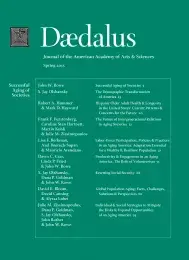The Demographic Transformation of America
The face of aging in America is about to change. Within the next thirty years, the U.S. population will experience a permanent change in its age structure, and there is reason to believe that cohorts reaching older ages in the future will be far different from those reaching older ages today. In this essay, I explain why life expectancy in the United States is likely to diverge from that experienced by the rest of the developed world; describe recent trends in healthy life expectancy; and examine how the age structure of the United States will by mid-century be different from that found today.
The face of aging in America is undergoing a profound transformation. Within the next thirty years, the U.S. population will accompany the rest of the developed world in experiencing a permanent change in its age structure. The United States will not only be much older in the coming decades, confronting a suite of resulting challenges and opportunities, but cohorts that reach older ages in the future are likely to be far different from those reaching older ages today. The reason? Older cohorts in the future will have been born into and lived through an entirely different set of environmental and medical/ health conditions relative to their counterparts born in the early twentieth century. In this essay, I begin by explaining why life expectancy in the United States is likely to diverge from that experienced by the rest of the developed world (a phenomenon that has already begun); describe recent trends in healthy life expectancy; and examine how the age structure of the United States by mid-century will be different from that found today. Weaved into the discussion of each topic is the issue of how disparities are likely to influence trends in longevity and health. . . .
Access the full volume here.
